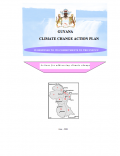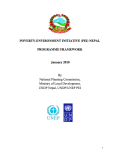
Guyana State of the Environment Report 2016 presents a critical analysis of the current specific condition of the country's environment; the pressures and drivers; the management interventions initiatives and systems in place to address environmental concerns, and their impacts.

Guyana Climate Change Action Plan seeks to address commitments of Guyana to the Convention by formulating national programme containing measures to mitigate climate change by addressing anthropogenic emissions by sources and removals by sinks of all greenhouse gases not controlled by the Montreal Protocol, and measures to facilitate adequate adaptation to climate change.

After the social, economic and political turmoil, Kyrgyzstan as a country is undergoing important changes that will shape the future of the country. Until now Kyrgyz do not have clearly defined target indicators shared by the people. With the intent to share the same value the National Sustainable Development Council of Kyrgyz Republic proposes its vision of the nation's future in the report National Sustainable Development Strategy for the Kyrgyz Republic.

The report Poverty-Environment Initiative (PEI) Nepal Programme Framework entails Nepal's situation analysis that is expected to help PEI's objectives to integrate climate change and environmental aspects into national and local level planning. It includes key outputs and activities carried out by PEI to integrate pro-poor environmental measures in national planning, budgeting, and monitoring processes.

Developed to strengthen Jordan's capacity to respond to the detrimental impacts of climate change as well as to solidify Jordan's global stewardship in emission reduction The National Climate Change Policy of the Hashemite Kingdom of Jordan 2013-2020 aims to achieve a pro-active, climate risk-resilient Jordan, to remain with a low carbon but growing economy, with healthy, sustainable resilient communities, sustainable water and agricultural resources, and thriving and productive ecosystems in the path towards sustainable development.
